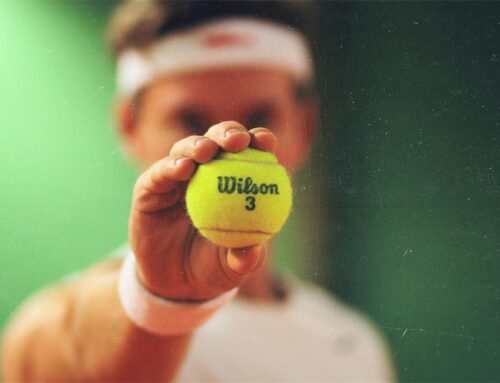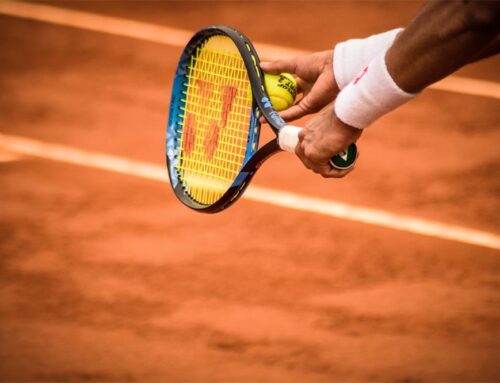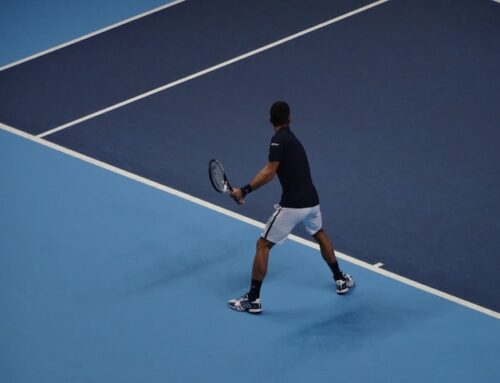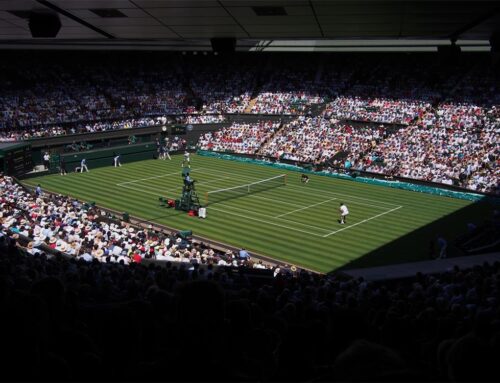Soft tennis was invented in Japan as a variant of tennis. Soft rubber balls are used in this game. In Asia, soft tennis is quite popular. While it originated from tennis, there are significant differences between the two sports. As an example, soft tennis uses an inflatable rubber ball with specific pressure requirements, smaller rackets than tennis rackets, and different scoring rules. There are also differences between soft tennis and tennis in terms of referee setup and gameplay techniques. Let’s take a closer look at soft tennis!

What is soft tennis?
Soft tennis originated in Japan when tennis was introduced to the country from Western countries in the 1970s. Due to a lack of resources for making tennis balls and rackets, which were also expensive to import, schools in Japan used small rubber balls for recreational activities. Rubber balls proved to be suitable for the sport, and over time soft tennis evolved into what we know today.
As soft tennis gained popularity in Japan, the World Soft Tennis Federation was founded in 1973 to promote it worldwide. In 1975, the first World Soft Tennis Championships were held, initially biennially, but later every four years.
Unlike tennis, which has gained popularity in Europe and the Americas, soft tennis has been popular in Asia for a long time. It wasn’t until 2004 that soft tennis spread to Europe, where several European countries established soft tennis associations. Tennis has always been dominated by Western players, but Asian players have held a dominant position in soft tennis for decades.
What Are the Differences Between Soft Tennis and Tennis?
Tennis and soft tennis share the word “tennis” in their names, but they are completely different sports. Here are a few key differences between them:
1. The level of competition
Tennis is an Olympic sport, but soft tennis is not.
2. The ball specifications
Standard Tennis Ball Specifications:
* The ball should be uniformly covered with white or yellow textile materials, with no visible seams on the exterior.
* The diameter should be between 6.541 cm and 6.858 cm, and the weight should be between 56.7 grams and 58.5 grams.
* The bounce height should be between 53 inches (134.62 cm) and 58 inches (147.32 cm) when dropped freely from a height of 100 inches (254 cm) onto a concrete surface.
Standard Soft Tennis Ball Specifications:
* The ball is made of white rubber and is inflatable.
* The ball measures 6.6 cm in diameter and weighs 30-31 grams.
* When dropped from 1.5m on the playing court, the ball should bounce 65-80 cm (international rules specify 55-80 cm).
The material, diameter, weight, and bounce height of the two sports balls are obvious differences.
3. Rackets
Standard Tennis Racket Specifications:
* The hitting surface of a tennis racket should be flat and conform to unified regulations, while the strings should be attached to the racket’s frame. At the intersection, the strings should be intertwined or connected.
* Racket string samples should be generally consistent, emphasizing the center density not being less than the rest of the string. Both sides of the racket should have the same characteristics during ball striking based on the design and stringing of the racket.
* Since January 1, 1997, tennis racket frames (including the handle) used in professional matches must not exceed 27 inches (73.66 cm). Since January 1, 2000, rackets used in non-professional matches can be no longer than 32 inches (81.28 cm). Racket frames must not exceed 12 1/2 inches (31.75 cm) in width. Stringed planes must not exceed 15 and 1/2 inches (39.37 cm) in length and 11 and 1/2 inches (29.21 cm) in width.
* Racket frames, including handles, must not have any attachments or devices unless the attachments are solely and explicitly used to prevent racket wear, breakage, vibration, or to adjust weight distribution, and they must be reasonable in size and placement.
Standard Soft Tennis Racket Specifications:
* Soft tennis rackets should be made of wood, metal, or other materials, and they should be strung with net strings.
* A soft tennis racket usually measures 69 cm in length and has an oval frame. 32 cm in length, 22 cm in width, and 37 cm in handle length.
A racket that produces a special impact on the ball due to the method of stringing net strings is not allowed to be used again.
4. Referee Setup
There is usually one main referee and at least six line judges in a tennis match. Soft tennis matches are usually refereed by one main referee and one assistant referee, along with two line judges. Assistant referees and line judges may not be required, or additional line judges may be needed, depending on the match situation.
5. Game Rules
Most regular tennis matches are best-of-three sets, two-out-of-three sets, or best-of-five sets in major tournaments for men. Soft tennis has similar scoring rules to tennis, but the set format does not usually include games in each set. In most cases, it uses a format such as seven games with four wins or nine games with five wins. In tennis doubles matches, except for the server who must stand behind the baseline, all other players can enter the court. Players in soft tennis doubles must remain behind the baseline until the serve has landed before they can freely change positions on the court, except the player receiving the serve.
6. Other differences
Tennis and soft tennis are also distinguished by differences in court surfaces, ball properties, and racket materials and shapes, along with variations in playing styles and techniques. In soft tennis matches, flat-hitting techniques are often preferred over the mainstream topspin techniques seen in tennis. In addition, soft tennis matches generally last much shorter than tennis matches.






Leave A Comment